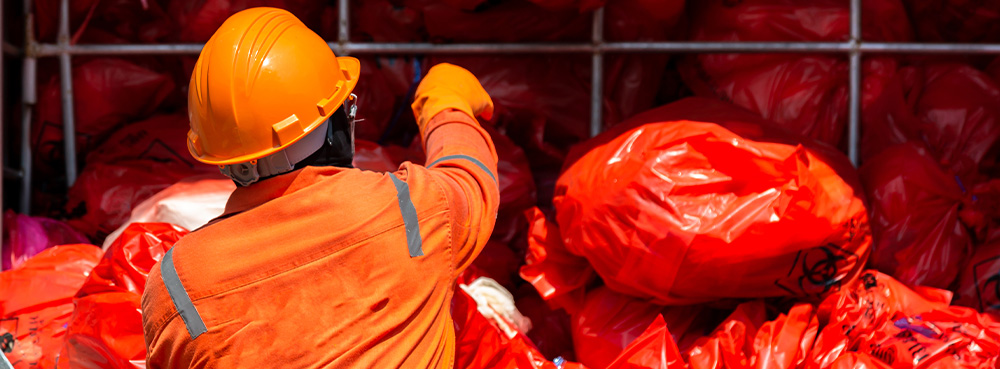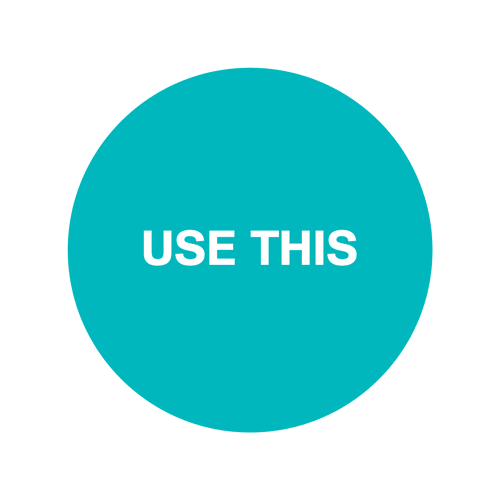How to Reduce Excess Regulated Medical Waste Caused by COVID-19

The COVID-19 pandemic, now three years into its spread, has resulted in a dramatic increase in the amount of regulated medical waste (RMW) being produced. As healthcare institutions take precautions to protect patients and staff from infection, an abundance of personal protective equipment (PPE), single-use medical supplies, and other waste is being generated and classified as RMW. This increase in RMW has put a strain on healthcare facilities, both in terms of the costs associated with disposing of the waste properly and the environmental impact of doing so.
The growing volume of RMW poses a unique challenge for healthcare facilities, as the waste must be segregated, stored, and disposed of per strict regulations. In addition, RMW disposal is typically more expensive than other types of waste. Fortunately, there are steps that healthcare facilities can take to reduce the amount of excess RMW being produced.
In this article, we will discuss how RMW can be reduced, including the adoption of reusable disposal containers and a more educated approach to waste segregation.
TOPICS WE WILL COVER:
1 / What is regulated medical waste?
2 / How has COVID generated excess RMW?
3 / What are consequences of excess RMW?
4 / How can excess RMW be reduced?
5 / The importance of excess waste reduction

What is Regulated Medical Waste (RMW)?
RMW is typically identified as any solid waste generated in the diagnosis, treatment, or immunization of human beings or animals that is caked with dried blood or potentially infectious material and capable of releasing these materials during handling.
This includes, but is not limited to, sharps (needles, syringes), PPE (masks, gloves), and single-use medical supplies (bandages, dressings).
RMW can also include human tissue and body parts and any waste that has come into contact with bodily fluids. As you can imagine, a large majority of RMW has been accumulated and disposed of as healthcare companies and others fight the COVID-19 pandemic.
How Has COVID-19 Generated Excess RMW?
The World Health Organization (WHO) recently released a report on the status of healthcare waste in the context of COVID-19. Their findings estimate that 87,000 tons of personal protective equipment (PPE) procured and shipped to support the COVID-19 response ended up as RMW.
This staggering report highlights the need for better management of healthcare waste to reduce the environmental and health impacts of COVID-19. The COVID-19 pandemic has resulted in a sharp increase in the amount of RMW being produced for several reasons:
1. More PPE and single-use medical supplies are being used.
Due to the increased risk of infection, healthcare workers use more PPE than ever before. This includes disposable gowns, gloves, masks, and face shields. In addition, many medical procedures that were once performed using reusable equipment are now being done with disposable single-use items. For example, nearly 144,000 tons of RMW in syringes, needles, and more were reported in the WHO survey.
2. More waste is being classified as RMW.
Out of an abundance of caution, many healthcare facilities are classifying more waste as RMW than is necessary. For example, paper towels that have been used to dry hands may be classified as RMW even though they pose no risk of infection.
3. Waste segregation is often done poorly.
In many cases, waste segregation is not done properly, leading to more RMW being generated than necessary. If PPE and single-use medical supplies are mixed in with regular trash, the entire load will likely be classified as RMW. This confusion has led the CDC and others to release updated guidance on segregation and removal.
What Are the Consequences of Excess RMW?
The consequences of excess RMW can be significant for both healthcare facilities and the environment:
Higher disposal costs for healthcare facilities.
The disposal of RMW is typically more expensive than other types of waste due to the special handling and transportation requirements. As a result, healthcare facilities that generate a large amount of excess RMW can experience significant increases in disposal costs.
Greater environmental impact.
RMW must be disposed of in accordance with strict environmental regulations. This typically involves incinerating the waste, releasing harmful pollutants into the air.
Potential safety hazards.
If RMW is not adequately segregated and disposed of, it can pose a safety hazard to healthcare workers and the general public. For example, sharps that are mixed in with regular trash can pose a serious injury risk.
How Can Excess RMW Be Reduced?
There are several steps that healthcare facilities can take to reduce the amount of excess RMW being generated:
1. Adopt the use of reusable containers.
One way to reduce the amount of RMW being generated is to switch from disposable to reusable disposal containers. Reusable sharps containers can be used countless times across their 50-year life cycle, reducing the amount of plastic that ends up in landfills.
By comparison, single-use containers are disposed after one use. This added burden is compounded as facilities create more RMW.
2. Educate staff on proper waste segregation.
Another way to reduce excess RMW is to educate staff on proper waste segregation procedures. This can help to ensure that PPE and single-use medical supplies are not mixed in with regular trash or vice-versa.
As individuals begin to see their unique contribution to the waste stream, they are more likely to take ownership of their waste and properly segregate it. Resources like this RMW segregation poster are a good way to reinforce best practices at your facility.
3. Implement a waste minimization policy.
A third way to reduce excess RMW is to implement a waste minimization policy. This can help to ensure that only necessary items are being used and that all items are being reused or recycled whenever possible. A proper waste minimization policy will include guidelines on when to use disposable items and when to switch to reusable ones. It will also include guidelines on adequately segregating and disposing of different types of waste.
4. Invest in new technologies.
Finally, healthcare facilities can reduce excess RMW by investing in new technologies that help to minimize waste. For example, some hospitals are now using digital x-rays, eliminating the need for film and chemicals. Other hospitals are using robots to sterilize surgical instruments, which reduces the need for disposable items. By investing in new technologies, healthcare facilities can help to reduce the overall amount of RMW being generated.
The Importance of Excess Waste Reduction
By reducing the amount of excess RMW being generated, healthcare facilities can help lower their disposal costs and minimize their environmental impact. Proper waste segregation can help ensure the safety of healthcare workers and the general public.
As the world continues to grapple with the impacts of the COVID-19 pandemic, healthcare facilities must take steps to reduce the amount of excess RMW being generated. Fortunately, the right strategies can help to achieve this goal.
Adopting reusable disposal containers, educating staff on proper waste segregation, and implementing a waste minimization policy can all help to reduce the amount of RMW being generated unnecessarily.
By taking these steps, healthcare facilities can begin to mitigate the financial and environmental impacts of the pandemic. Together, we can reduce the amount of waste generated and ensure that it is disposed of safely and responsibly.
Learn more about how you can reduce the amount of excess RMW in your facility. We offer a wide range of solutions designed to help healthcare facilities manage their waste stream more effectively and efficiently.
Let's Talk!
Your time is valuable, and we don’t want to play hard to get. You can either phone us directly on the details listed on our contact page, or feel free to fill out this short form and one of our team members will get back to you as quickly as possible.
